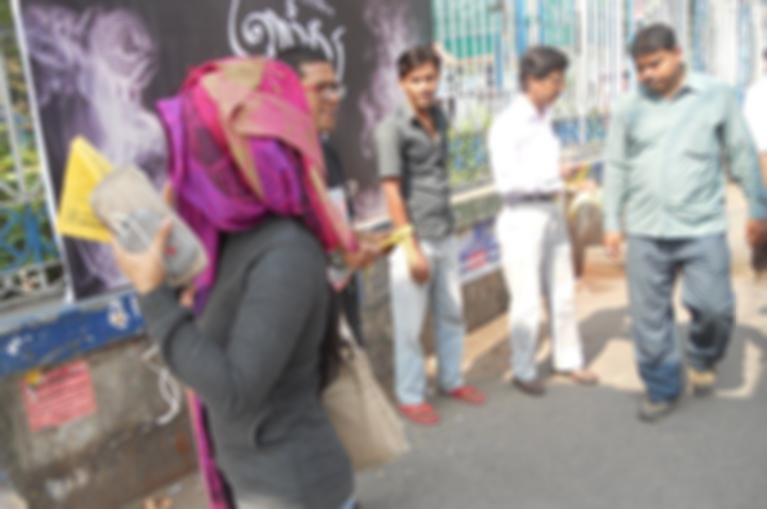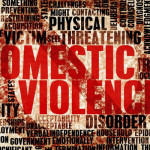I have often wondered. But I haven’t found a rational, comparatively analyzed and factual explanation for this question. Yet.
As a young student in Kolkata, my friends and I used to travel to school in public transport. This is where I first encountered the subtle violence perpetrated towards women and girls. From a slight brush of the hand, to the more aggressive groping by overenthusiastic sexual predators, we have experienced a large spectrum of the sexual violence that is perpetrated publicly. And it was always bounded by a “we” feeling, because I wasn’t the only one being affected by this outlook. That gave me some relief, of course, and made it easier to internalize as a ‘fact of life’ without questioning if there are alternatives to this experience. As college-goers, we experienced further demonstrations of misogyny and sexism that is out there for us womenfolk to endure. Just another form of sexual aggression in a long list of gender specific behaviours, conducts and opportunities meted out to the women in our society.


That is why we need laws to tell our men, in clear legal terms that define the punishments for deviation, that violence towards women is not natural. That is why we need to teach our men and boys ‘not to rape’, as if the natural normal male tendency IS to rape and violate. That is why we have the PWDVA (Protection of Women from Domestic Violence Act, 2005) provision, because men are incidentally and naturally prone to violence, or that is what this all seems to implicate. Or at least, that enough men in our society need to be “forbidden” from violating women so as to legitimize a protective legislation and policy demands for “changing attitudes” towards women in general.


This also means, that if you were not already killed in the womb, you are now liable to be subjected to all forms of gender violence and predetermined gender roles that most definitely positions the woman under and lower than the man. And within these sanctions, your every move is carefully judged and compared with ideal types and any or all deviations are strictly considered offensive and are thus punishable by more gendered violence. Whereas, the actions of your male counterparts are protected by God’s law first, and then by the myriad social and religious tropes that intertwine with political sanctions – where India has witnessed more than one politician claiming “Boys are boys, they’ll do naughty things, why dwell on such small matters”, and “If women go out at night wearing short skirts of course they will be raped…”, and not to forget “A woman’s place is in the home, if she leaves the protection of her home who can tell what can happen to her, and then it is not the fault of the man, is it?” and “What happens inside the closed doors within a husband and his wife is their family matter, whether he beats her or has sex with her it is up to him!”, and many more such incredibly eye-opening statements by powerful men.
In India, the PWDVA was introduced in 2005, after the groundbreaking Vienna Accord of 1994 and the Beijing Declaration and the Platform for Action of 1995 decided that domestic violence is undoubtedly a human rights issue and a serious deterrent to development. Out of all forms of violence perpetrated on women, domestic violence is the most difficult to persecute, as it is mostly invisible and protected by the institution of family. Our society is built upon the established structure of the family system, where women are given the lowest ranks when it comes to power over the household, despite the fact that traditionally women are considered to be the caretakers of the “home” while men are the providers who are to be responsible for the “outside world”. Therefore, women inside the home are subjected to the laws of the household, which encompasses punishments for non-compliance, defiance and/or failure to uphold duties, with sexual degradation, violence and humiliation. All the above treatments charter around subjugation of the woman under the man. Thus, this form of violence can (and does) go unnoticed, normalized, and often legalized, under the invisibility of women’s issues away from the more important matters.
But the fact of the matter is, that women are subjected to different forms of violence (both gendered and sexual) through almost all social and cultural aspects of their lives. Beginning from their access to education to reproductive rights to career opportunities, this patriarchal violence against women is being perpetrated through the male agents in their lives. In fact, women are equal partners in crimes against other women – by participating in the same system of violence based on gender. In fact, a lot of these women perpetrators feel that this is the law of the land and women are required to be subjugated and by becoming the ally of a man to mete out this treatment to another woman, they may rise in their position within the family structure. This is where the PWDVA acts as a buffer between the actions swept under the garb of domesticity and those that can now be pulled out from under the tropes of domestic protection and discussed in a court of law that provides women the opportunity to save themselves from these situations of extreme mental and physical breakdown.
I remember, during those bus rides to school, the bus would always get crowded when it reached this specific stop because it was connected to the local train route, and the bus went towards the main IT hub in Kolkata. This means two things, one – this happened during the peak traffic hours, and two – this was being perpetrated by educated middle-class men who felt the need to take the opportunity of a crowded bus to harass and assault teenage girls in school uniforms. As a part of the normalization process, we would carry pins and needles in our pockets, so that when we could feel that particular hand sliding up our thighs or dropping down towards our chest, we could suddenly push the sharp pointed weapon right into their hands (and sometimes down the front of their trousers that were unnecessarily brushing on our behinds). The pain would ensure they retract immediately, and stay off. Some were repeat offenders that we began to recognize and would shout out to the bus conductor to not let them on the bus – some listened, and for others the five rupees fare was more important than our dignity. That’s when we brought out our concealed weapons and took the matter into our own hands. But what is important to note here is, that the incidence of violence against women in any form or manner, is largely accepted.
If sexual assault of underage girls on board a public transport in full view of an urban educated crowd can go unnoticed or naturalized into everyday behaviour, one can only imagine what the woman – who has no access to a supportive family, or education, or economic freedom, or the opportunity to make a life of her own – must have to endure within the walls that trap her. Marital rape is still considered a fallacy by many proponents of modern Indian politics, followed by magistrates who feel a woman’s place is in her home and her duties bound to motherhood and her husband, or the woman who leaves her home to make a living on her own is considered a harlot and an available sexual object.
The PWDVA states, “An Act to provide for more effective protection of the rights of the women guaranteed under the Constitution who are victims of violence of any kind occurring within the family and for matters connected therewith or incidental thereto.” – is necessary because the most statistically high occurrence of violence on women takes place within the family and inside the home. It really is a very daunting reality – where, as a woman, am I not free from abuse or violence, where my father, brothers and uncles are potential perpetrators? Was I brought into this world to swallow mankind’s oppression and still emerge as a caregiver and mother? What is the reason for this bizarre hatred towards women?
Therefore, the PWDVA is not only an act to protect women from violence, it is also an act to protect men from perpetrating this same violence, because despite the staggering statistical reports, I refuse to mark every man I come across in my life as a potential sexual offender, or as a possible criminal capable of violence on any or all women. Often we fail to recognize that it is not always the individual who commits this exploitation in isolation, instead more often than not it is the existing perspective of men and women in our society that legitimizes the execution of differential treatment of men and women. Thus the reformation needs to be social and not individual, where the society and its attitude is held responsible and not just the person(s) who perpetrate this sort of violence. The society needs to hold itself responsible, and not just the criminals who commit these crimes. The world is created of both men and women, and shunning one half of humankind does not bode well for the progress or development of society.
Then, why do I not see enough men stand up for their right to NOT be equated with criminals and abusers? Why are there no men fighting for their place as MEN, and not ‘perpetrators’? Why aren’t enough men rallying for equal status of women? Why aren’t enough men shunning dowry and domestic abuse? Why aren’t men who feel they do not need to stand on top of a woman to feel powerful coming out to shame those who do? Why aren’t men our compatriots, instead of being violators? What normalizes violence? I feel I ended up with more questions than I began with, but we are in a process of finding out our true nature, and once we have those answers, the reality will be more definite – for better or for worse.
Discuss this article on Facebook




